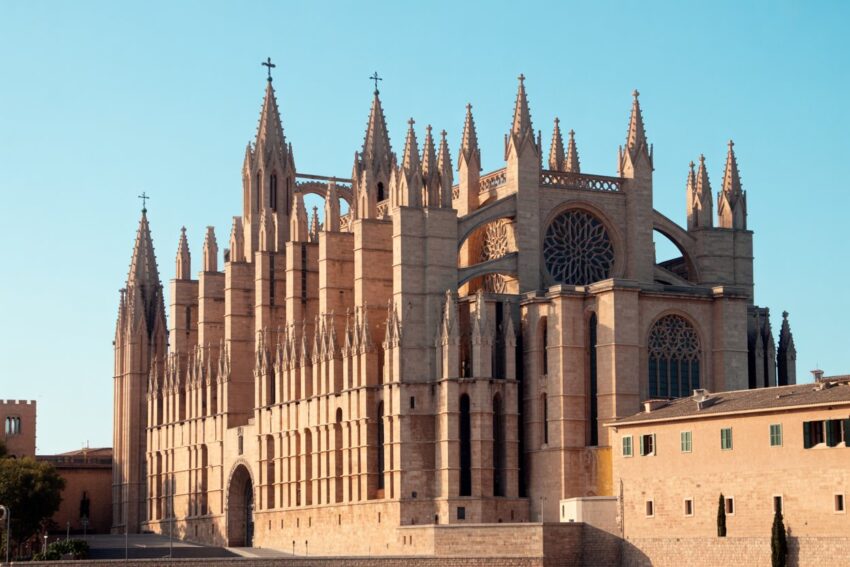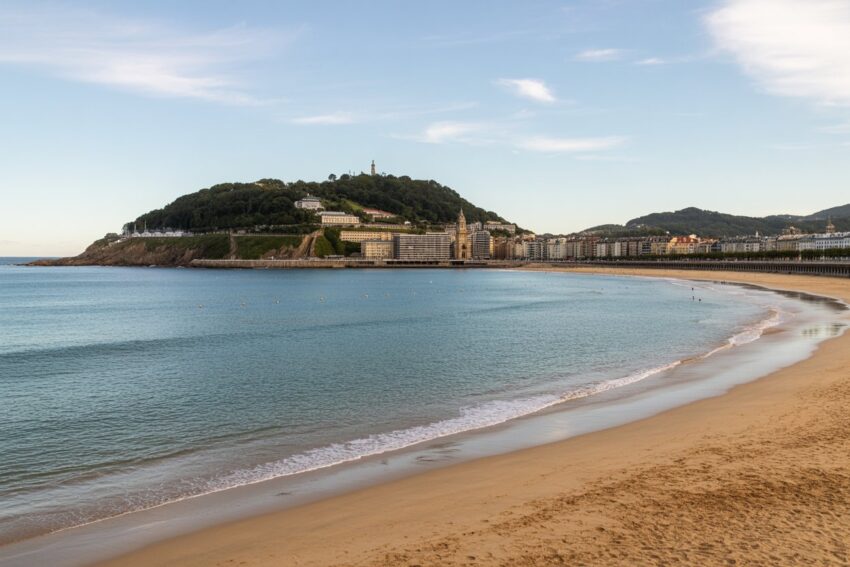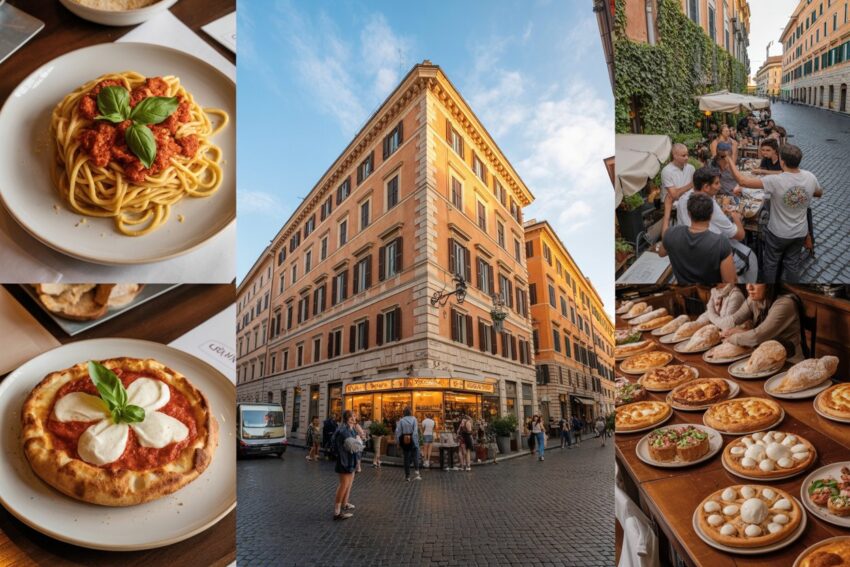“Ibiza: A Vibrant Island of Sun, Sea, History, and Nightlife”

“Ibiza: A Perfect Blend of Natural Beauty, Rich History, and Vibrant Nightlife”
Ibiza, often known for its world-famous nightlife and pulsating party scene, is much more than just a place to dance until dawn. Nestled in the Mediterranean Sea, this Balearic island is also a haven for nature lovers, history buffs, and those looking for a relaxing escape. From its stunning beaches and crystal-clear waters to its UNESCO World Heritage-listed old town, Ibiza offers a diverse mix of attractions that cater to every type of traveler.
In this article, we will explore the top attractions of Ibiza, from its historic Dalt Vila to the serene Cala Comte Beach, showcasing the island’s charm beyond its nightlife.
Dalt Vila: Ibiza’s Historic Old Town
Dalt Vila, Ibiza’s ancient walled old town, is a must-visit for anyone interested in the island’s rich history and culture. A UNESCO World Heritage Site, Dalt Vila is one of the best-preserved medieval towns in Europe, offering visitors a glimpse into Ibiza’s past. The town is perched on a hill, with narrow cobblestone streets that wind their way through historic buildings, ancient walls, and charming squares.
At the heart of Dalt Vila lies the Cathedral of Ibiza, a stunning example of Gothic architecture that overlooks the town and the sea. From the top of the fortress, visitors can enjoy sweeping views of the surrounding coastline and the modern city below. The panoramic vistas, combined with the medieval charm of the town, make Dalt Vila one of the most atmospheric spots on the island.
Wandering through Dalt Vila is like stepping back in time. The town’s mix of Moorish, Renaissance, and Gothic architecture creates a rich visual tapestry that is as fascinating as it is beautiful. Visitors can explore the old town at their own pace, soaking in the historic atmosphere, visiting art galleries, and enjoying the many cafes and restaurants tucked away in its alleyways. The ancient city walls and gates tell the story of Ibiza’s strategic importance over the centuries, making Dalt Vila a place of both historical and cultural significance.
Cala Comte Beach: A Perfect Sunset Spot
Cala Comte Beach is one of the most beautiful and sought-after beaches in Ibiza, offering pristine turquoise waters, soft golden sand, and stunning views of the nearby islands. Known for its natural beauty and tranquil atmosphere, Cala Comte is the perfect destination for those looking to unwind and soak up the sun.
The beach is made up of several coves, each offering its own secluded spot for relaxation. Whether you’re swimming in the crystal-clear waters, sunbathing on the beach, or enjoying a picnic under the shade of the surrounding pine trees, Cala Comte is a haven for beach lovers. Its shallow waters make it an ideal spot for families, while the more secluded areas provide a peaceful escape for couples or solo travelers.
Cala Comte is also one of the best spots on the island to watch the sunset. As the sun dips below the horizon, the sky transforms into a vibrant canvas of oranges, pinks, and purples, reflecting off the water and creating a breathtaking view. Many visitors flock to the beach in the late afternoon to enjoy the sunset, making it a popular destination for both locals and tourists alike.
For those seeking a little more adventure, Cala Comte offers opportunities for water sports such as kayaking and paddleboarding. The beach is also home to several beachside restaurants and bars where you can enjoy fresh seafood, Mediterranean dishes, and refreshing cocktails while taking in the stunning views.
Ibiza’s Natural Beauty: More Than Just Beaches
Ibiza is famous for its beaches, but the island’s natural beauty extends far beyond the coastline. The island is home to lush forests, rugged cliffs, and charming villages, all of which contribute to its laid-back, tranquil atmosphere. Ibiza’s interior is a haven for hikers and nature lovers, with a network of trails that wind through pine forests, along rocky cliffs, and up to scenic viewpoints.
One of the best ways to explore the island’s natural beauty is by taking a hike to the top of Es Vedrà, a striking limestone rock formation that rises dramatically from the sea. Located off the southwestern coast of the island, Es Vedrà is one of the most photographed spots in Ibiza, known for its mystical allure and breathtaking views. The hike to the top offers panoramic vistas of the surrounding islands and coastline, providing an unforgettable experience for nature enthusiasts.
For those interested in wildlife, Ibiza is also home to a variety of bird species, particularly around the Ses Salines Natural Park. The park, located in the southern part of the island, is a protected area known for its salt flats, wetlands, and diverse ecosystems. It’s a great spot for birdwatching, with species such as flamingos, herons, and waders commonly spotted in the area.
Ibiza’s Unique Nightlife: World-Class Clubs and Relaxed Beach Bars
While Ibiza is known for its natural beauty and historic sites, the island’s nightlife is an integral part of its appeal. Ibiza is home to some of the world’s most famous nightclubs, including Pacha, Amnesia, and Ushuaïa, which attract partygoers from around the globe. The island’s vibrant nightlife scene has made it a mecca for electronic music lovers, with world-renowned DJs performing at clubs and beach clubs throughout the summer season.
But Ibiza is not just about the party scene. The island also offers a more relaxed, bohemian nightlife, with beach bars and outdoor venues offering laid-back atmospheres perfect for watching the sunset while enjoying a cocktail. Many of the island’s beach bars host live music events, creating a more intimate and chilled-out vibe for those who prefer a quieter evening out.
Whether you’re looking to dance until dawn or simply enjoy a drink by the sea, Ibiza offers a nightlife experience that caters to all tastes and preferences.
Economic Impact: Tourism as a Key Driver
Tourism plays a central role in Ibiza’s economy, with millions of visitors flocking to the island each year to enjoy its beaches, nightlife, and cultural heritage. The island’s tourism sector supports a wide range of industries, including hospitality, transport, retail, and entertainment. Hotels, restaurants, bars, and clubs all benefit from the steady influx of visitors, contributing significantly to the local economy.
The popularity of Ibiza’s nightlife, in particular, has drawn international attention, with the island attracting partygoers and music lovers from around the world. This has led to a rise in luxury tourism, with high-end resorts, private villas, and exclusive events catering to the growing demand for upscale travel experiences. At the same time, the island’s natural beauty and cultural sites continue to attract a more diverse range of tourists, helping to ensure that Ibiza remains a year-round destination.
Conclusion: Ibiza’s Timeless Charm
Ibiza is an island of contrasts—where history meets modernity, nature meets nightlife, and tranquility meets excitement. From the ancient walls of Dalt Vila to the stunning sunsets at Cala Comte Beach, Ibiza offers something for everyone. Whether you’re exploring its rich cultural heritage, relaxing on its beautiful beaches, or dancing the night away, Ibiza promises an unforgettable experience that will captivate visitors from all walks of life.
With its unique combination of natural beauty, historical landmarks, and world-class nightlife, Ibiza remains one of the most sought-after destinations in the Mediterranean, continuing to draw visitors from across the globe.








